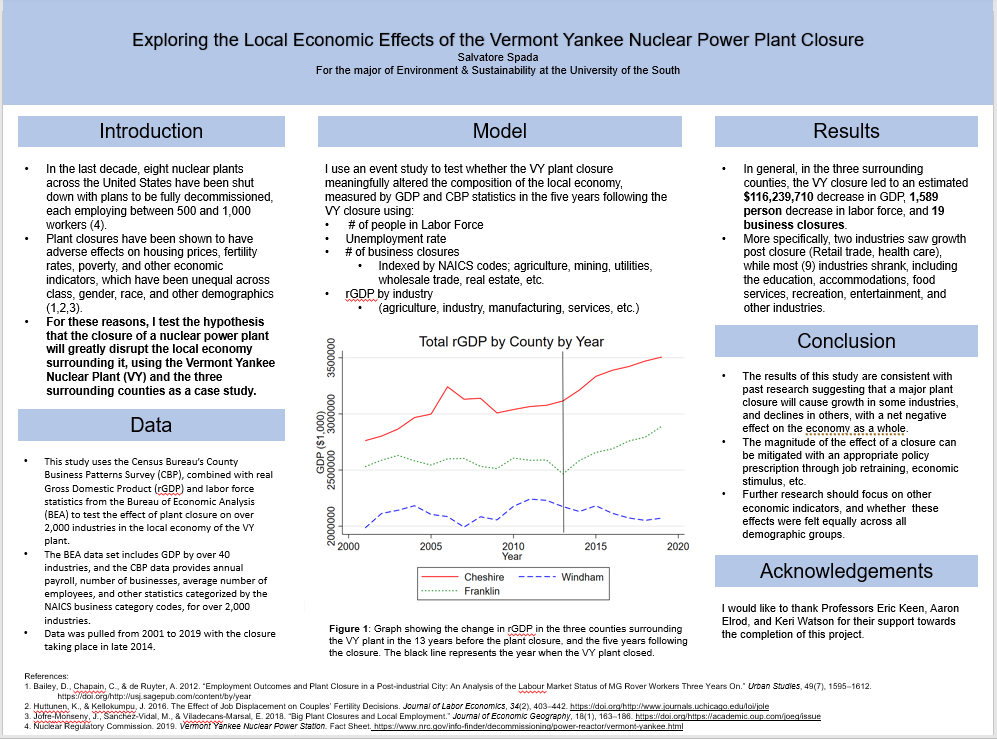Exploring the Local Economic Effects of the Vermont Yankee Nuclear Power Plant Closure
With a focus on reducing global carbon emissions and volatility in the power grid, nations, localities, and individual companies are deciding to close coal and nuclear plants that have become increasingly unprofitable. As major employment hubs for the surrounding communities, the closure of such facilities can have socioeconomic effects past the initial job losses at the plant itself. Using the town of Vernon, Vermont as a case study, this paper evaluates the direct and indirect economic effects of the closure of the Vermont Yankee (VY) nuclear plant on three surrounding counties. Data was compiled from the Census Bureau’s County Business Patterns survey, and GDP and employment statistics from the Bureau of Economic Analysis from 2001 to 2018 for the three counties surrounding the plant. Using an event study, I find that in the five years following the closure of the VY plant, the three surrounding counties saw a $116,239,710 decrease in real GDP, a decrease in the labor force by 1,589 people, and an estimated closure of 19 businesses. In contrast, specific industries saw growth such as retail trade, and health care. This suggests that the closure of the VY plant induced direct job losses from the closure itself, and indirect economic impacts shown by the decline in overall GDP. Future research should focus on creating a more robust data set of socioeconomic indicators that better reflect changes in demographics, tax revenue, and housing prices on similar closures.
 CLOSE SIDEBAR
CLOSE SIDEBAR
